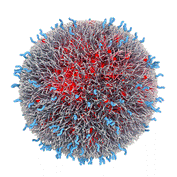Biotechnology, Center for
Document Type
Article
Date of this Version
1-2017
Citation
Eyun, Seong-il. BMC Evolutionary Biology (2017) 17:23 DOI 10.1186/s12862-017-0883-5
Abstract
Background: Copepods play a critical role in marine ecosystems but have been poorly investigated in phylogenetic studies. Morphological evidence supports the monophyly of copepods, whereas interordinal relationships continue to be debated. In particular, the phylogenetic position of the order Harpacticoida is still ambiguous and inconsistent among studies. Until now, a small number of molecular studies have been done using only a limited number or even partial genes and thus there is so far no consensus at the order-level.
Results: This study attempted to resolve phylogenetic relationships among and within four major copepod orders including Harpacticoida and the phylogenetic position of Copepoda among five other crustacean groups (Anostraca, Cladocera, Sessilia, Amphipoda, and Decapoda) using 24 nuclear protein-coding genes. Phylogenomics has confirmed the monophyly of Copepoda and Podoplea. However, this study reveals surprising differences with the majority of the copepod phylogenies and unexpected similarities with postembryonic characters and earlier proposed morphological phylogenies; More precisely, Cyclopoida is more closely related to Siphonostomatoida than to Harpacticoida which is likely the most basally-branching group of Podoplea. Divergence time estimation suggests that the origin of Harpacticoida can be traced back to the Devonian, corresponding well with recently discovered fossil evidence. Copepoda has a close affinity to the clade of Malacostraca and Thecostraca but not to Branchiopoda. This result supports the hypothesis of the newly proposed clades, Communostraca, Multicrustacea, and Allotriocarida but further challenges the validity of Hexanauplia and Vericrustacea.
Conclusions: The first phylogenomic study of Copepoda provides new insights into taxonomic relationships and represents a valuable resource that improves our understanding of copepod evolution and their wide range of ecological adaptations.
Included in
Biotechnology Commons, Molecular, Cellular, and Tissue Engineering Commons, Other Genetics and Genomics Commons, Terrestrial and Aquatic Ecology Commons


Comments
© The Author(s). 2017 Open Access This article is distributed under the terms of the Creative Commons Attribution 4.0 International License